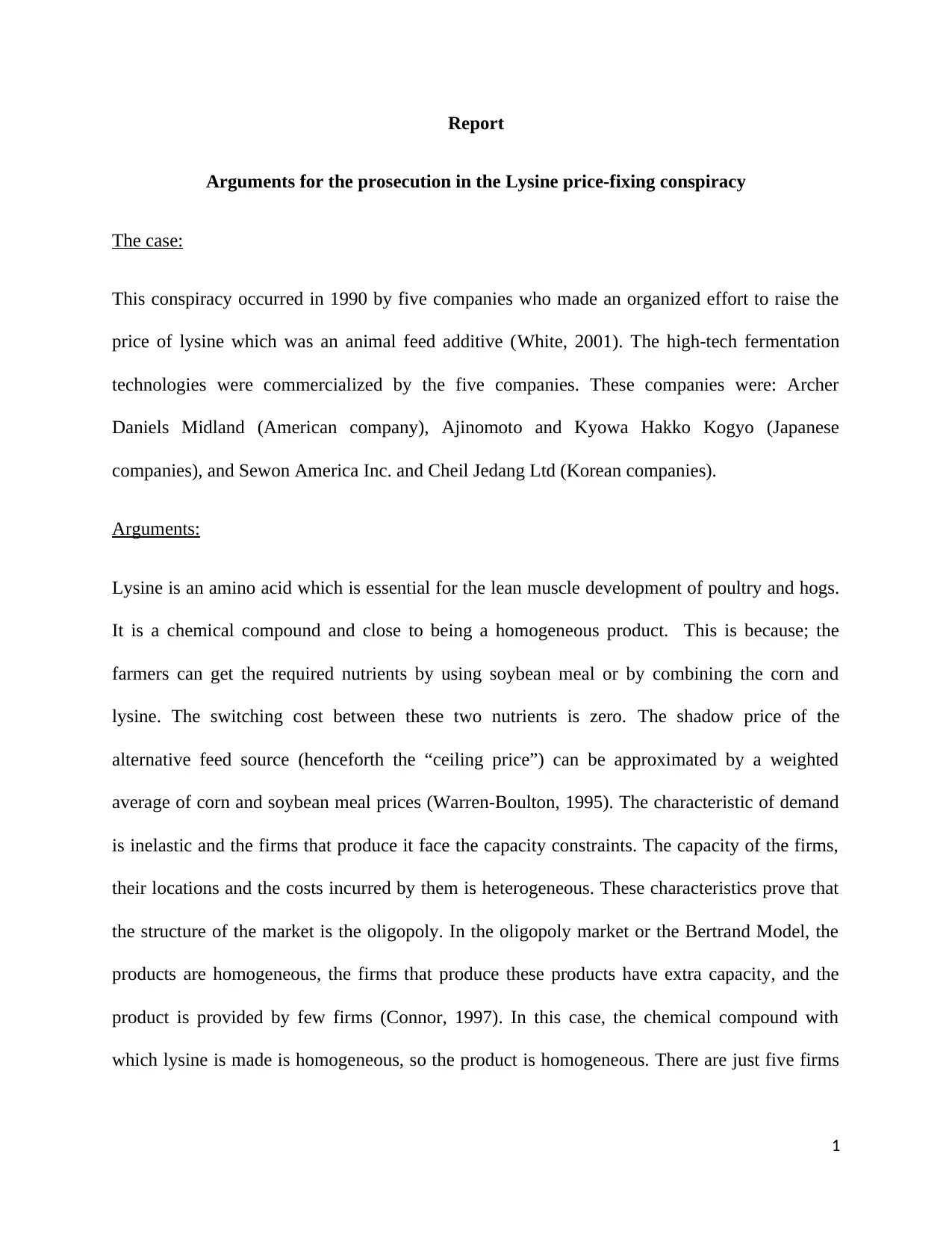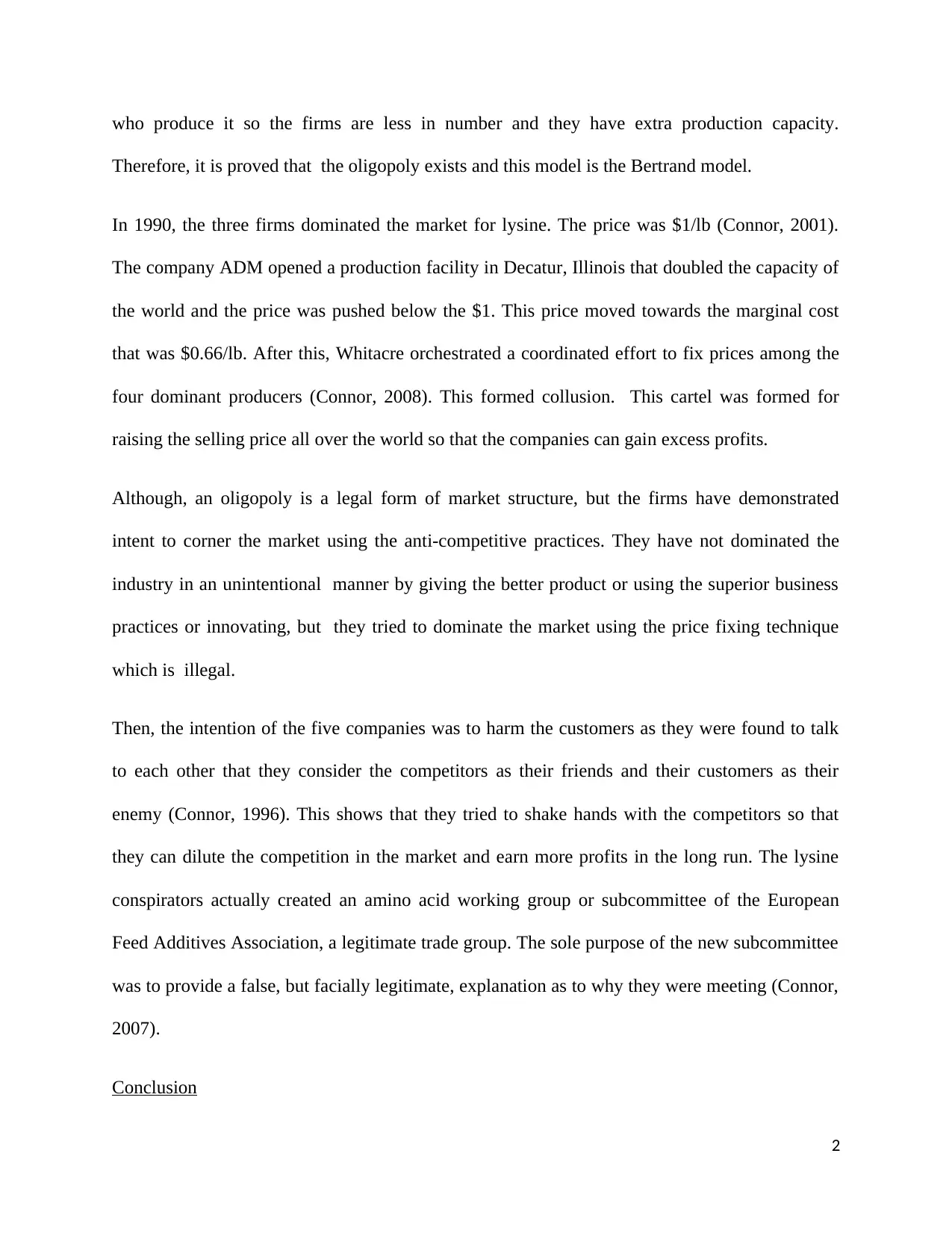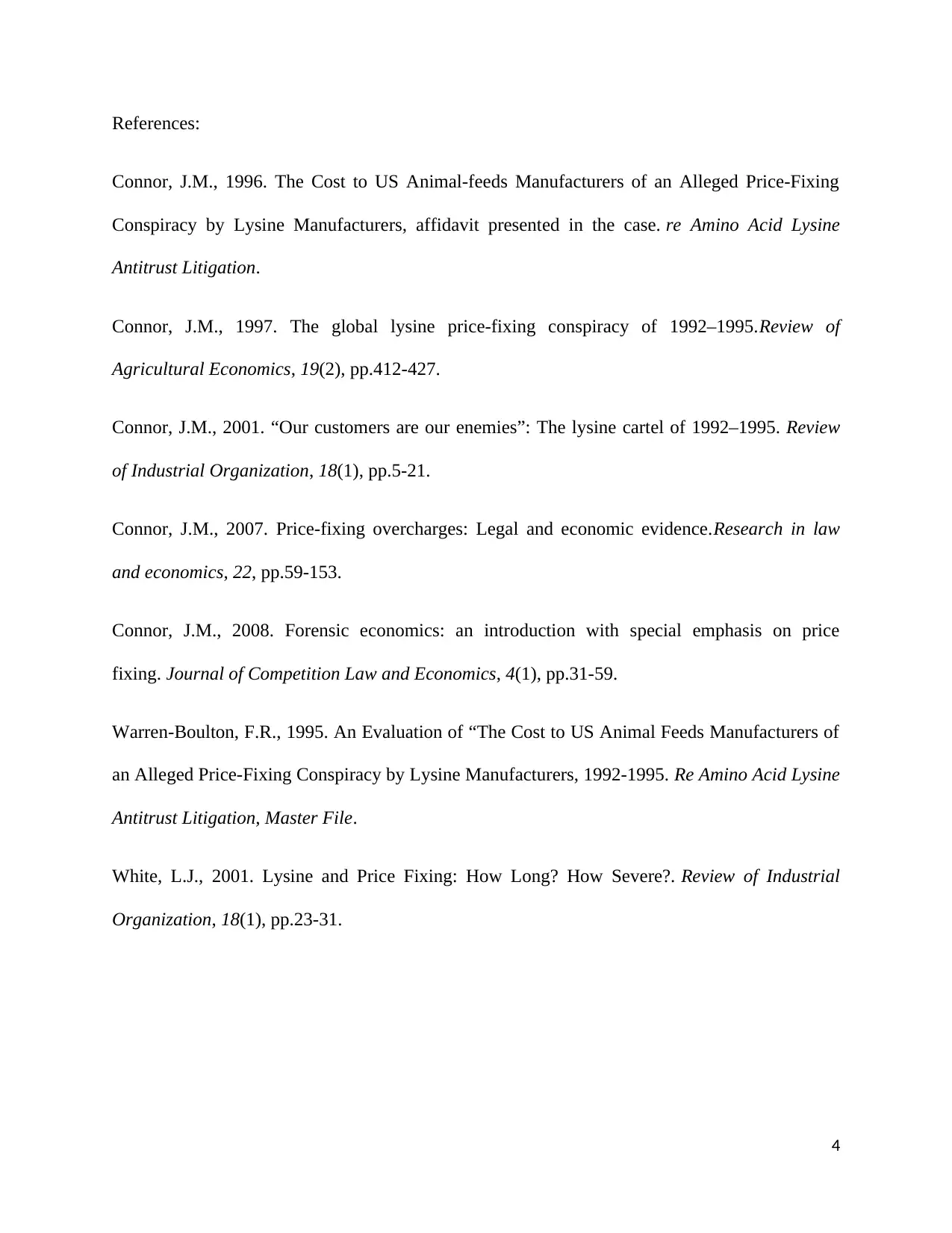Arguments for the Prosecution in the Lysine Price-Fixing Conspiracy
VerifiedAdded on 2019/09/30
|4
|951
|93
Report
AI Summary
The assignment content discusses the Lysine price-fixing conspiracy case that occurred in 1990 involving five companies: Archer Daniels Midland (American), Ajinomoto and Kyowa Hakko Kogyo (Japanese), and Sewon America Inc. and Cheil Jedang Ltd (Korean). The companies conspired to raise the price of lysine, an animal feed additive, by forming a cartel and engaging in anti-competitive practices. The case is analyzed using economic theory, including the Bertrand Model, which shows that the market structure was oligopoly. The five companies' intentions were to harm customers and gain excess profits through price-fixing, which is illegal.
Contribute Materials
Your contribution can guide someone’s learning journey. Share your
documents today.
1 out of 4





![[object Object]](/_next/static/media/star-bottom.7253800d.svg)